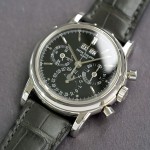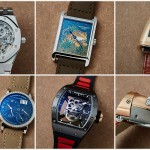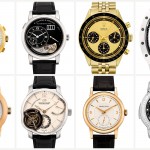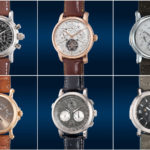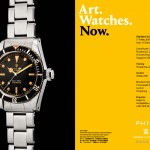Highlights: Complicated Pocket Watches at Phillips Hong Kong
The best of horology before wristwatches.
The upcoming Phillips watch auction in Hong Kong includes the expected offerings from establishment brands and independent watchmakers, but more unusually an impressive line-up of complicated pocket watches – almost all from the same owner.
Though the number of pocket watches is small, the selection is particularly notable in terms of quality, complications, and condition. We look at a quartet of impressive pocket watches in the sale, including two important watches that are not Swiss but built on Swiss ebauches: a 1930 L. Leroy grand complication with a four-digit year indicator and the massive, 63 mm Charles Frodsham minute repeating split-seconds chronograph with tourbillon.
With the exception of the Audemars Piguet, all the pocket watches were consigned by the same collector, who also owns the unique Patek Philippe ref. 767 grand complication with double-split seconds.
The auction takes place on May 24 (lots 801-934) and May 25 (lots 935-1083), and the online catalogue is here.
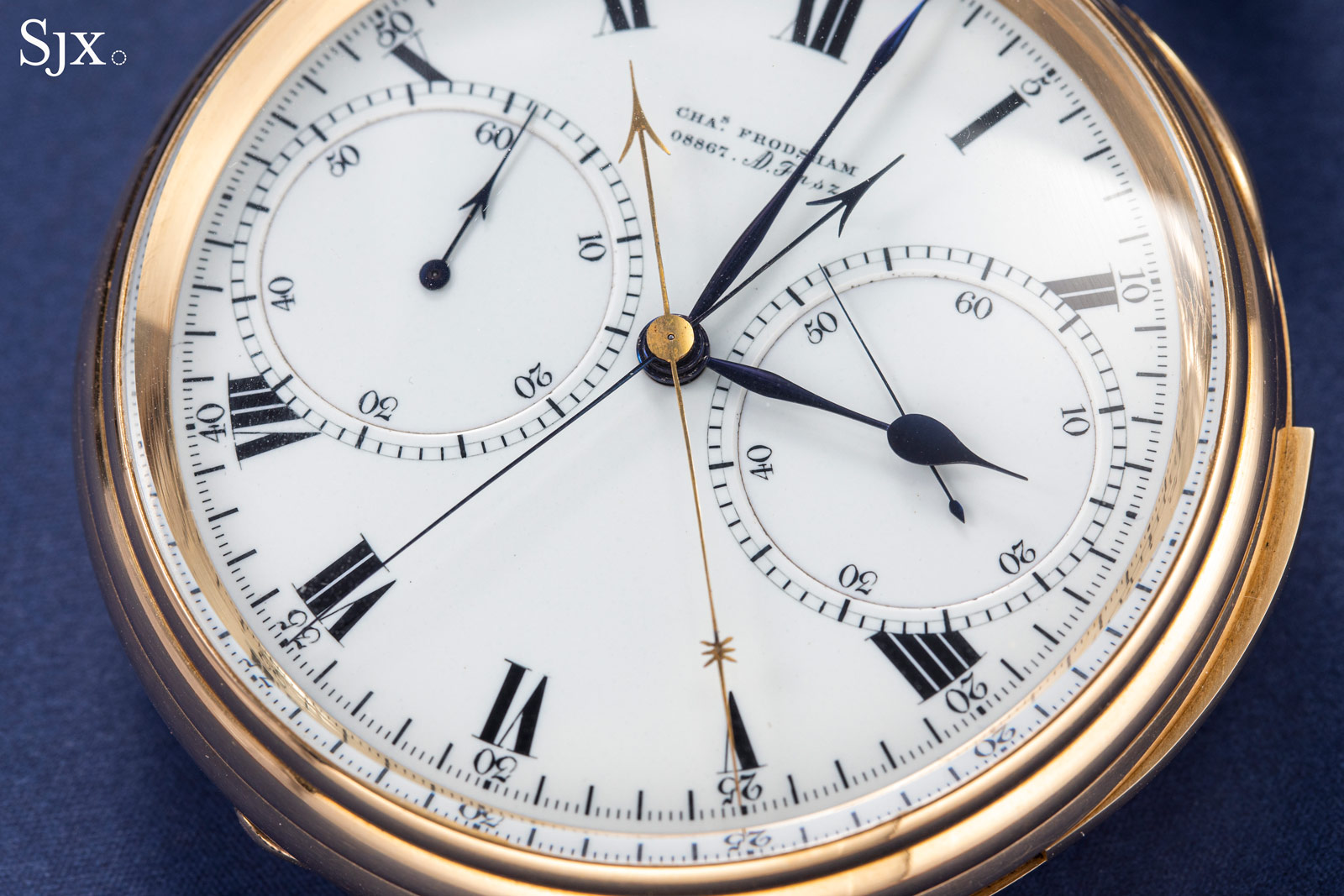
The Frodsham double complication with tourbillon
876 – L. Leroy & Cie. Minute Repeating Perpetual Calendar Chronograph
“Leroy” is a storied name in French watchmaker that began with Basile Le Roy (1765-1839), who was a contemporary of Abraham-Louis Breguet (1747-1823). Like Breguet, Le Roy was clockmaker to royalty, including Napoleon.
But this Leroy pocket watch was made by the firm of L. Leroy & Cie. founded by Louis Leroy (1859-1934), who was not related to Le Roy but worked for the latter’s successor firm. Leroy eventually took over the firm, named it after himself, and established the brand as one of continental Europe’s leading watchmakers.
The firm’s most famous creation was the Leroy 01 of 1904, at the time the most complicated watch, before the Graves Supercomplication and Calibre 89. Now on display in the watch museum of Besançon, once the capital of French watchmaking, the Leroy 01 boasts 27 complications.
This 1930 pocket watch was made during Leroy’s heyday and is a grand complication featuring a minute repeater, chronograph, and a perpetual calendar with a rare and unusual four-digit year display on a single disc.
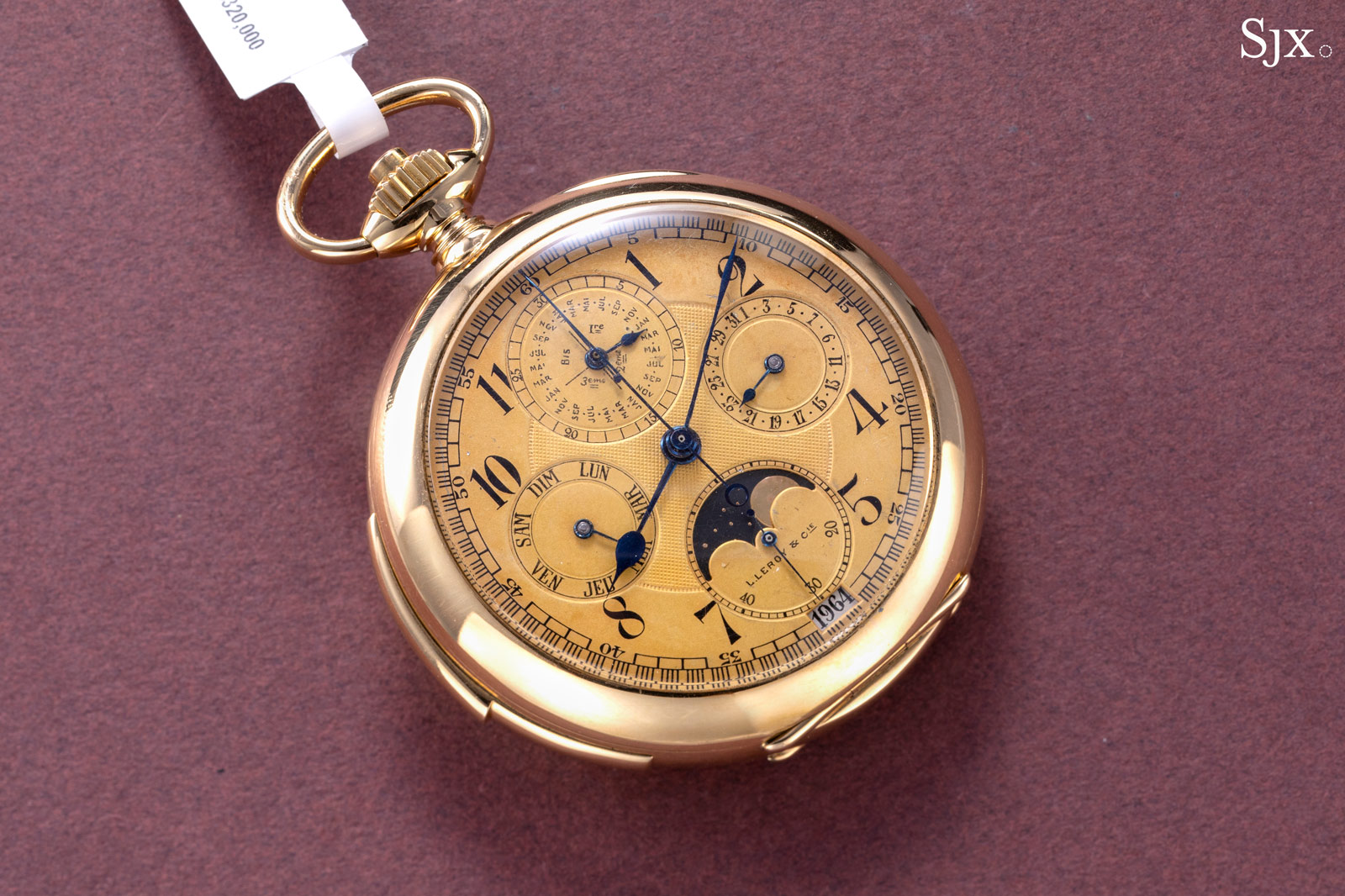
Interestingly, the year disc currently in the watch begins from 1964, indicating the owner at the time installed a new year disc some three decades after the watch was made.
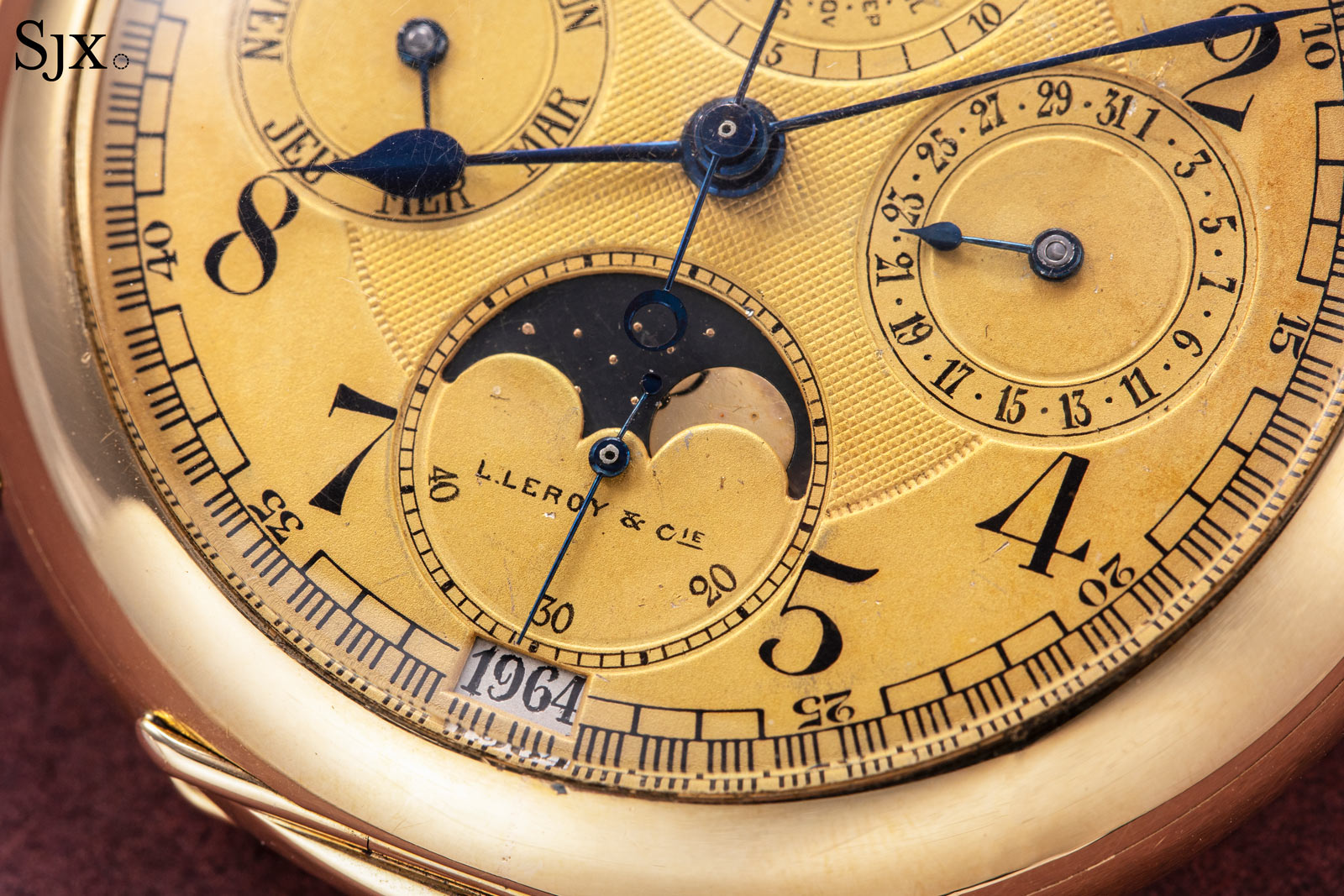
Like most French watches of the time, this contains a movement constructed on a Swiss ebauche. It has the typical appearance of a high-end Swiss movement of the early 20th century, but with frosted gilt bridges and plates.
The movement is notable for having been tested at the Besançon Observatory twice, including in 1932 when it obtained a first class rating, a distinction that’s also engraved on the cuvette. As a result, the movement is hallmarked twice with the Besançon “viper’s head”, one indicating a first-class rating and another for a third-class rating.
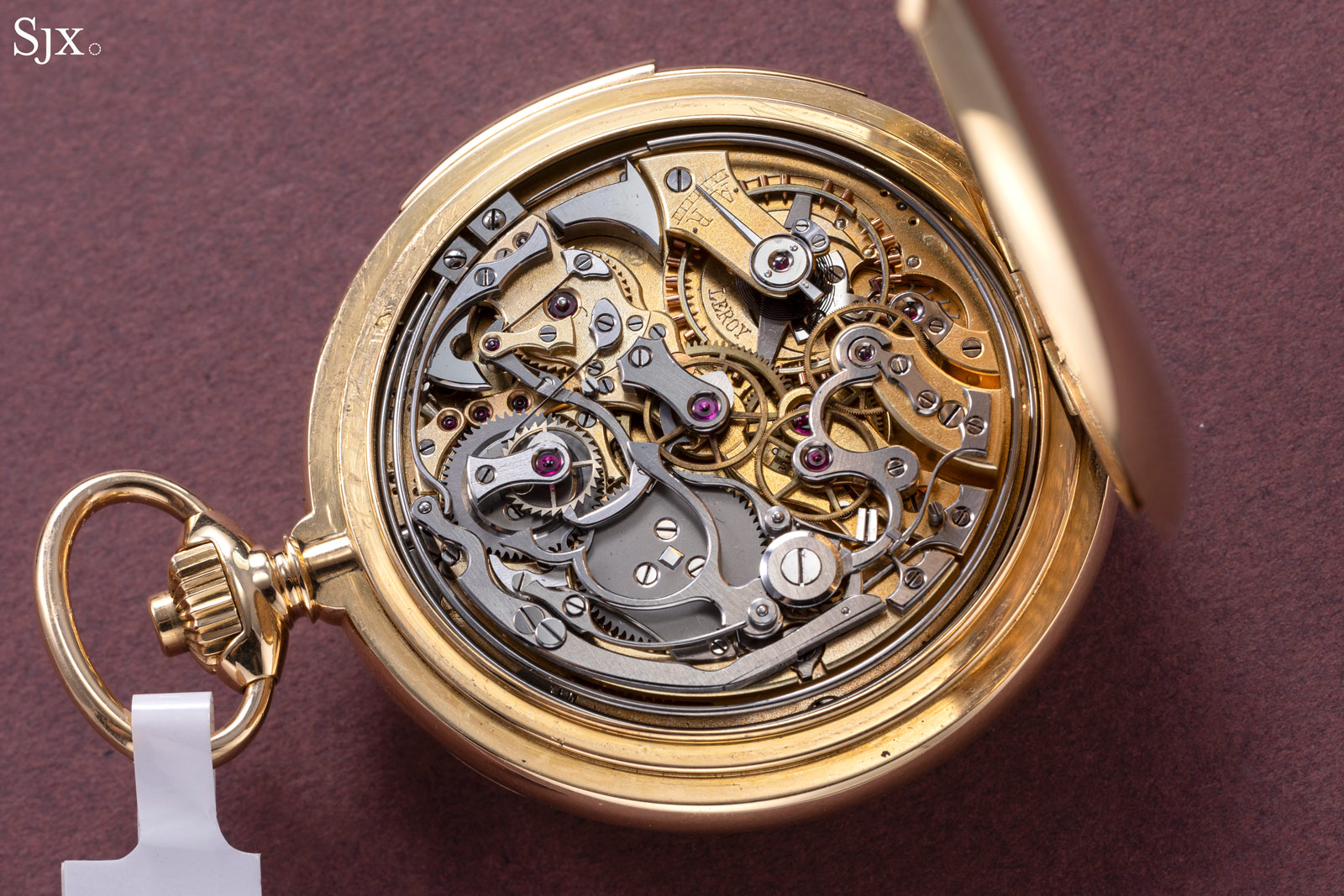
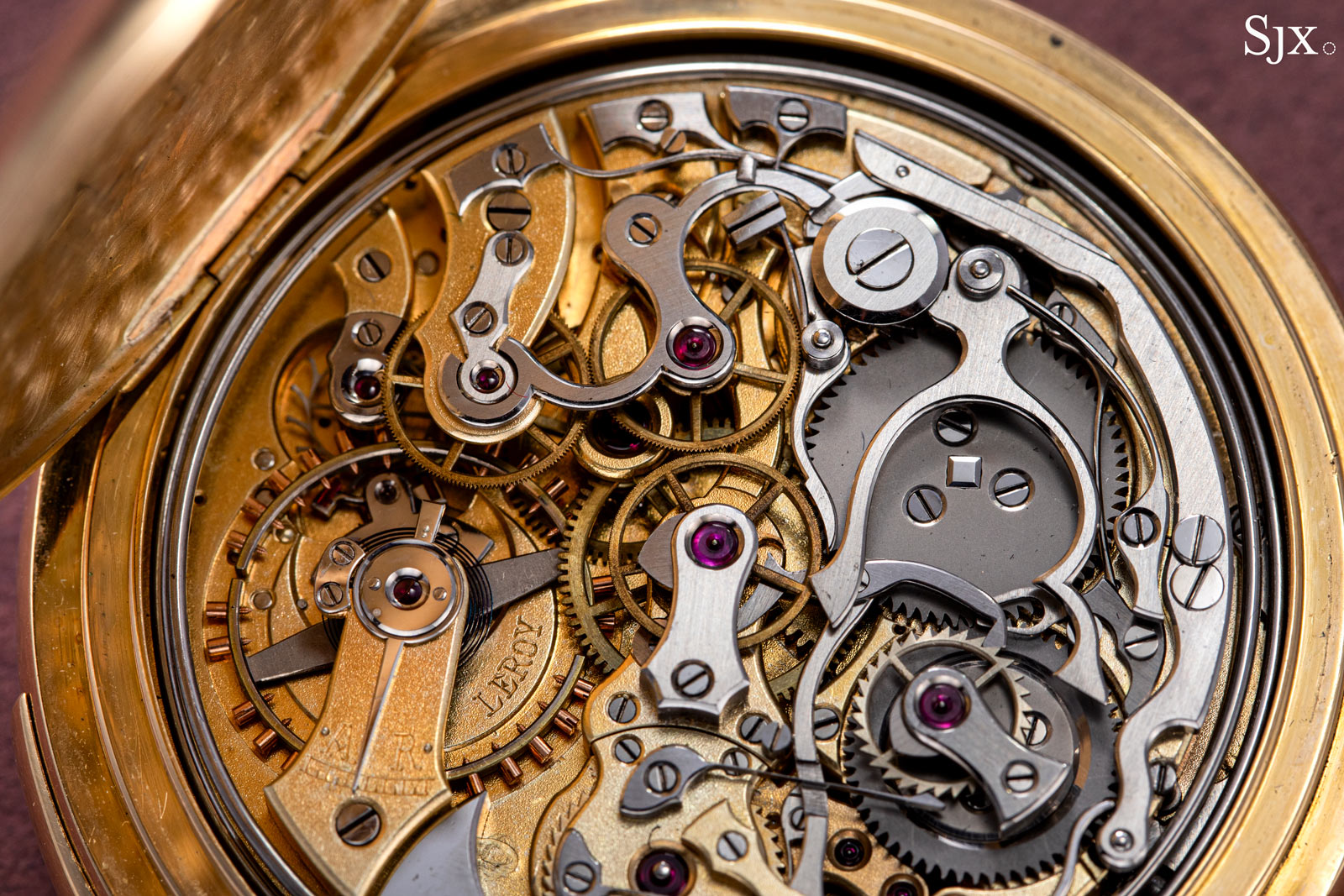
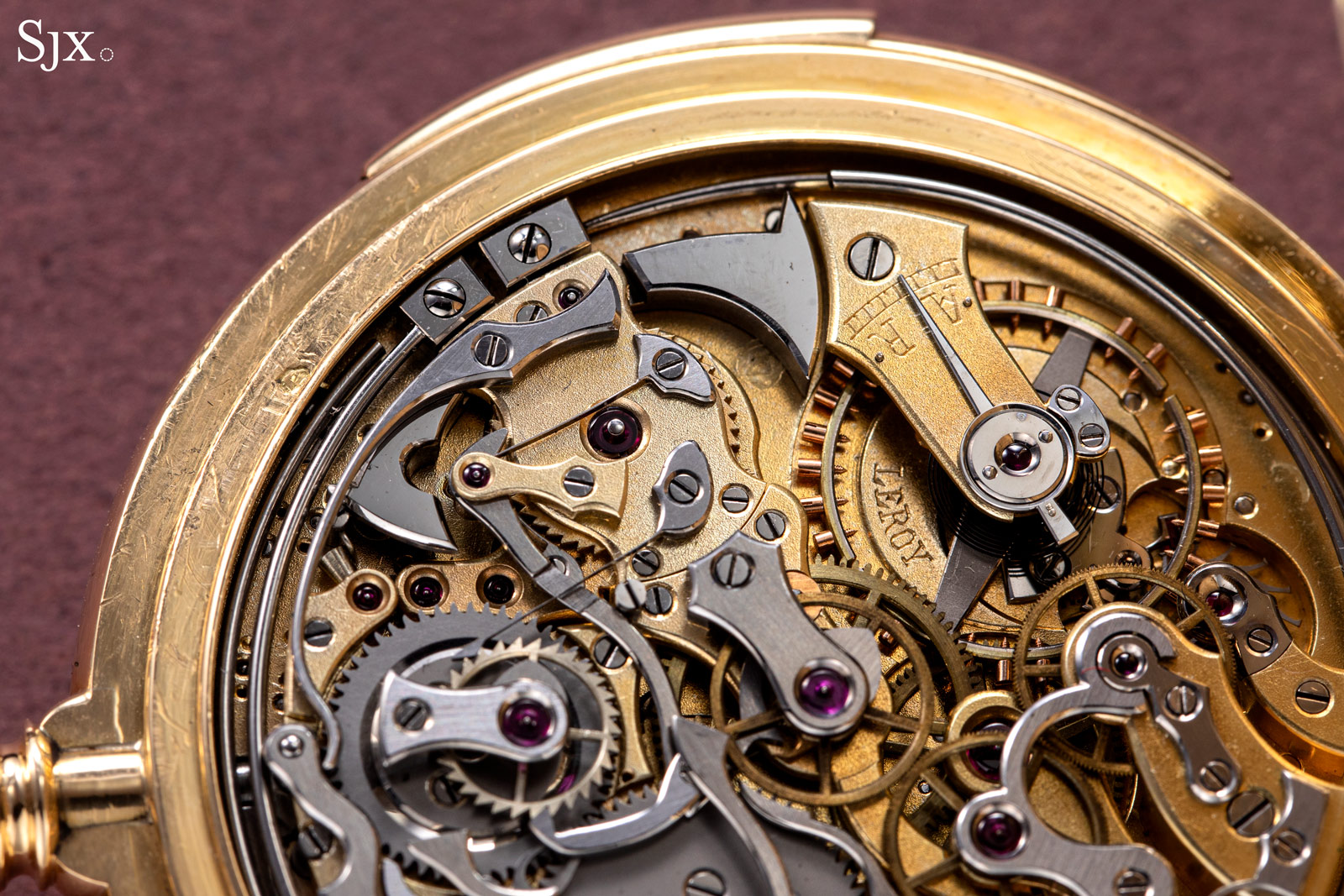
Delivered with its original box (which includes a slot to presumably accommodate a now-missing spare crystal), the Leroy triple complication has an estimate of HK$160,000-320,000, or US$20,500-41,000.
877 – Audemars Piguet Minute Repeating Perpetual Calendar
The most recent watch in amongst the highlights is the Audemars Piguet Quantieme Perpetuel Repetition Minutes ref. 25565BA. Though visually similar to perpetual calendar pocket watches AP made in the late 20th century, this is also a minute repeater.
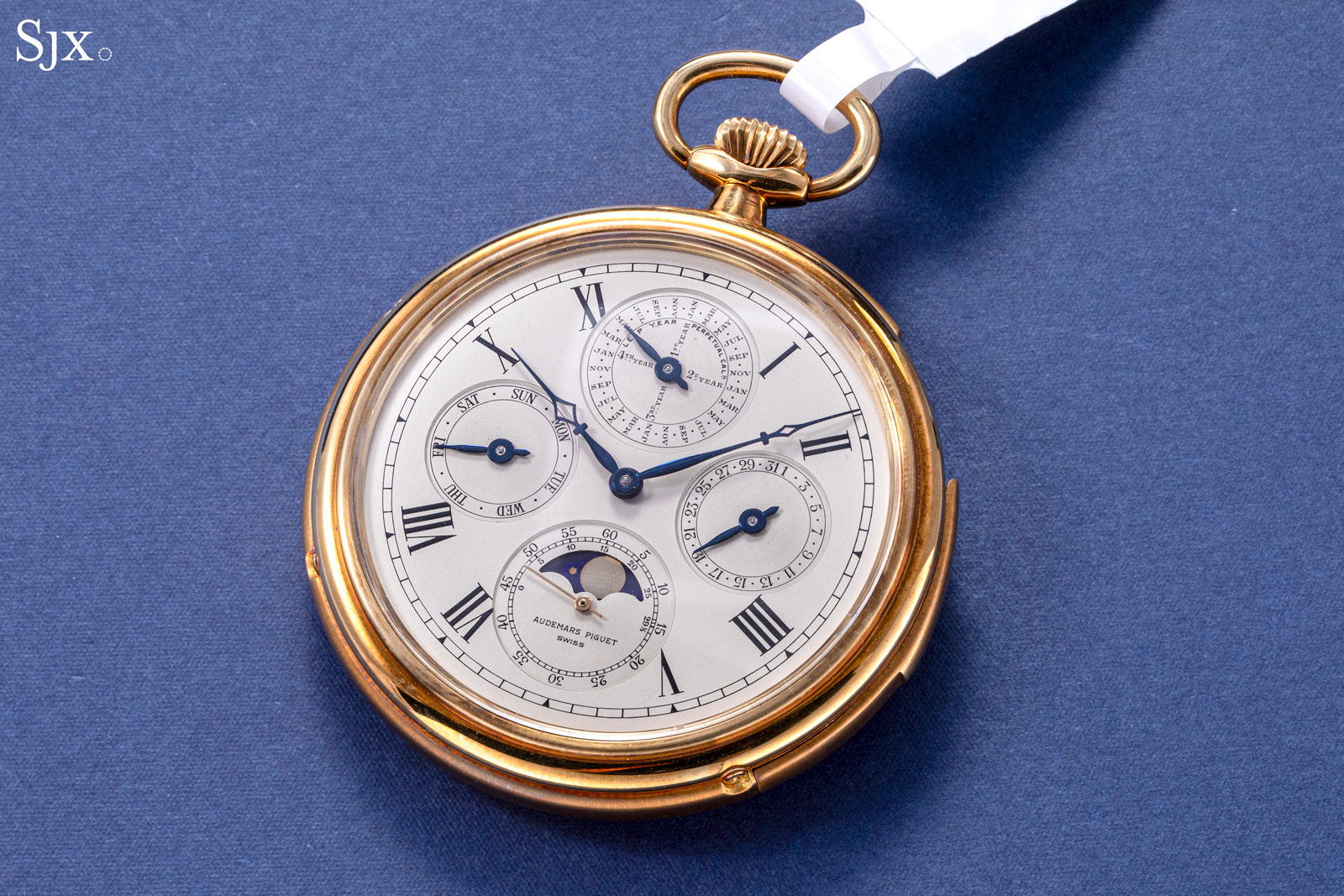
This model was in the catalogue for several decades, but this particular example is notable for being produced to mark the firm’s 125th anniversary in 2000 and marked as such on the certificate.

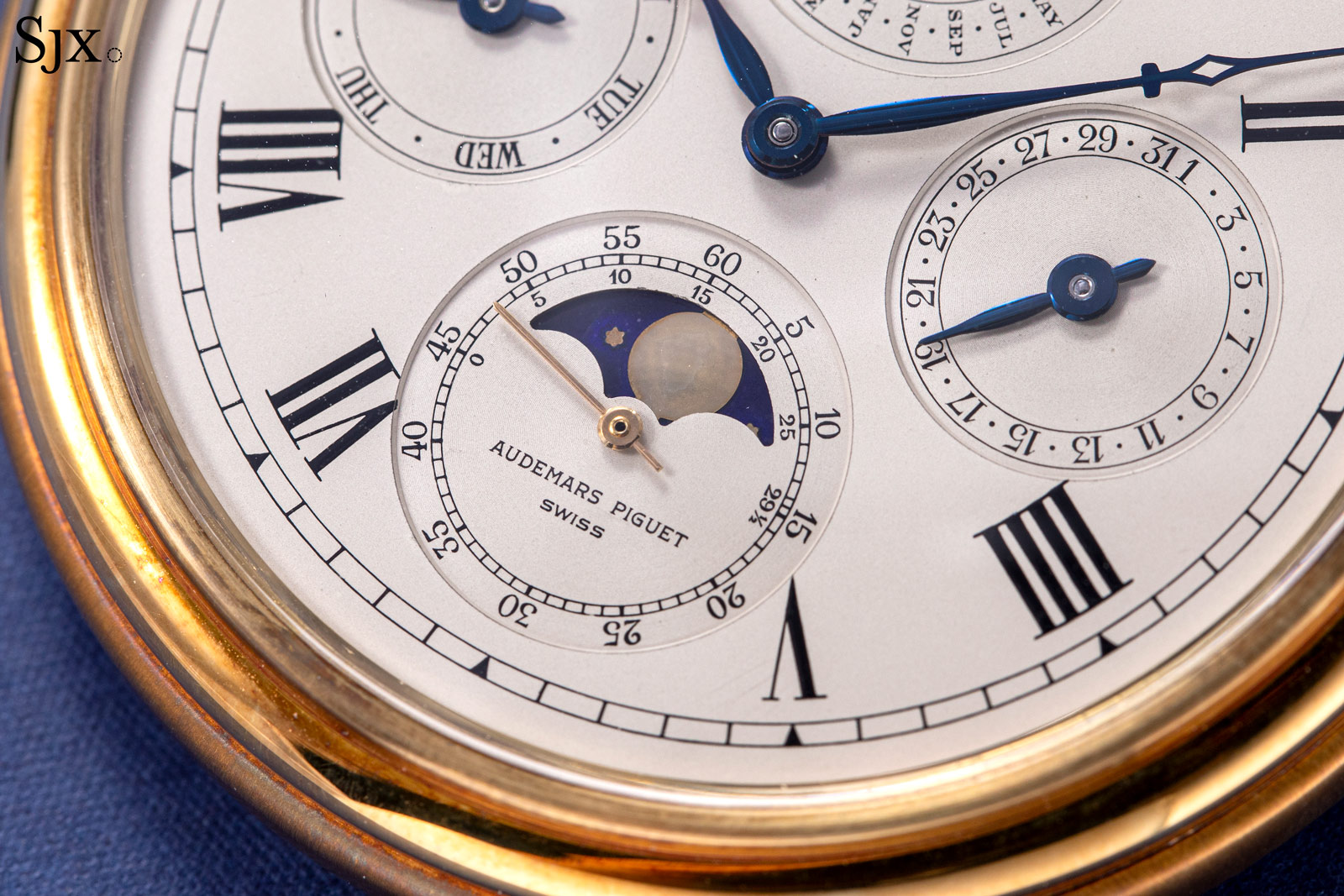
While the watch was made in the 21st century, it is powered by a movement from decades earlier. The cal. 2855 is hidden behind the solid back, but it has a classical aesthetic typical of ultra-thin pocket watch movements of the early 20th century. The movement is 17 1/2”’ wide but just 5.7 mm high.
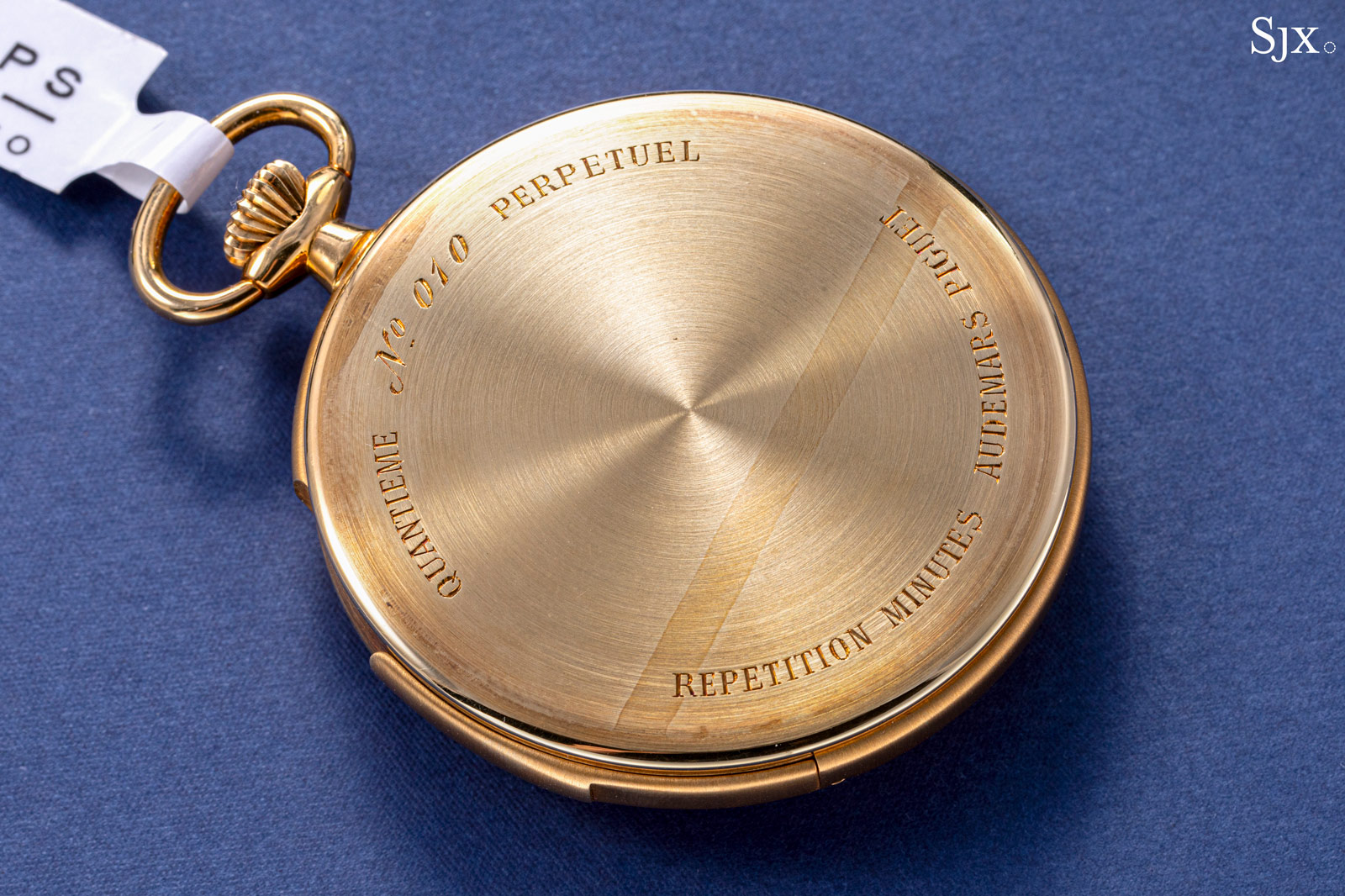
Presented in seemingly unused condition, this includes its original box and certificates. The estimate is HK$160,000-320,000, or US$20,500-41,000.
891 – Charles Frodsham Minute Repeating Split-Seconds Chronograph
Now famous for its Double-Impulse Chronometer wristwatch, Charles Frodsham was once a leading maker of high-end pocket watches, perhaps as famous in the late 19th and early 20th century as Patek Philippe or Vacheron Constantin are today.
Made in 1901, this pocket watch was one of the firm’s top-of-the-line offerings, combining a minute repeater, split-seconds chronograph, and one minute tourbillon, all contained in an enormous, 63 mm yellow gold case.
Notably, this is the same type of watch made famous by J. Pierpont Morgan, the American banker and watch collector who gifted some two dozen near-identical watches to friends and associates.
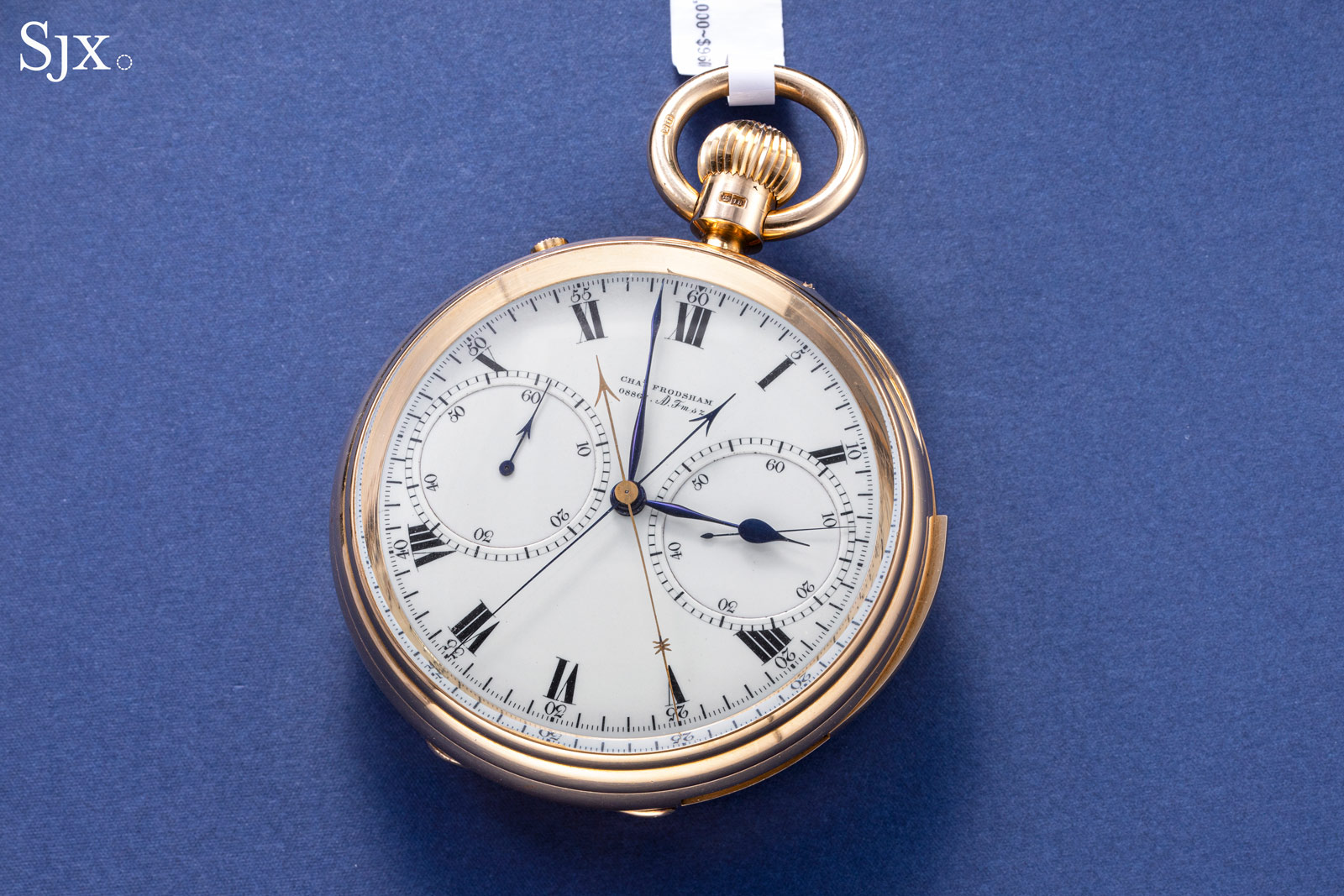
The clean, symmetrical dial is marked with the brand, serial number, and a cryptogram under 12 o’clock. “AD. Fmsz” refers to the year 1850 when the firm introduced its “caliper” marine chronometer watch with a compensation balance wheel. Subsequently, “AD. Fmsz” became a signature applied to the brand’s highest quality watches.
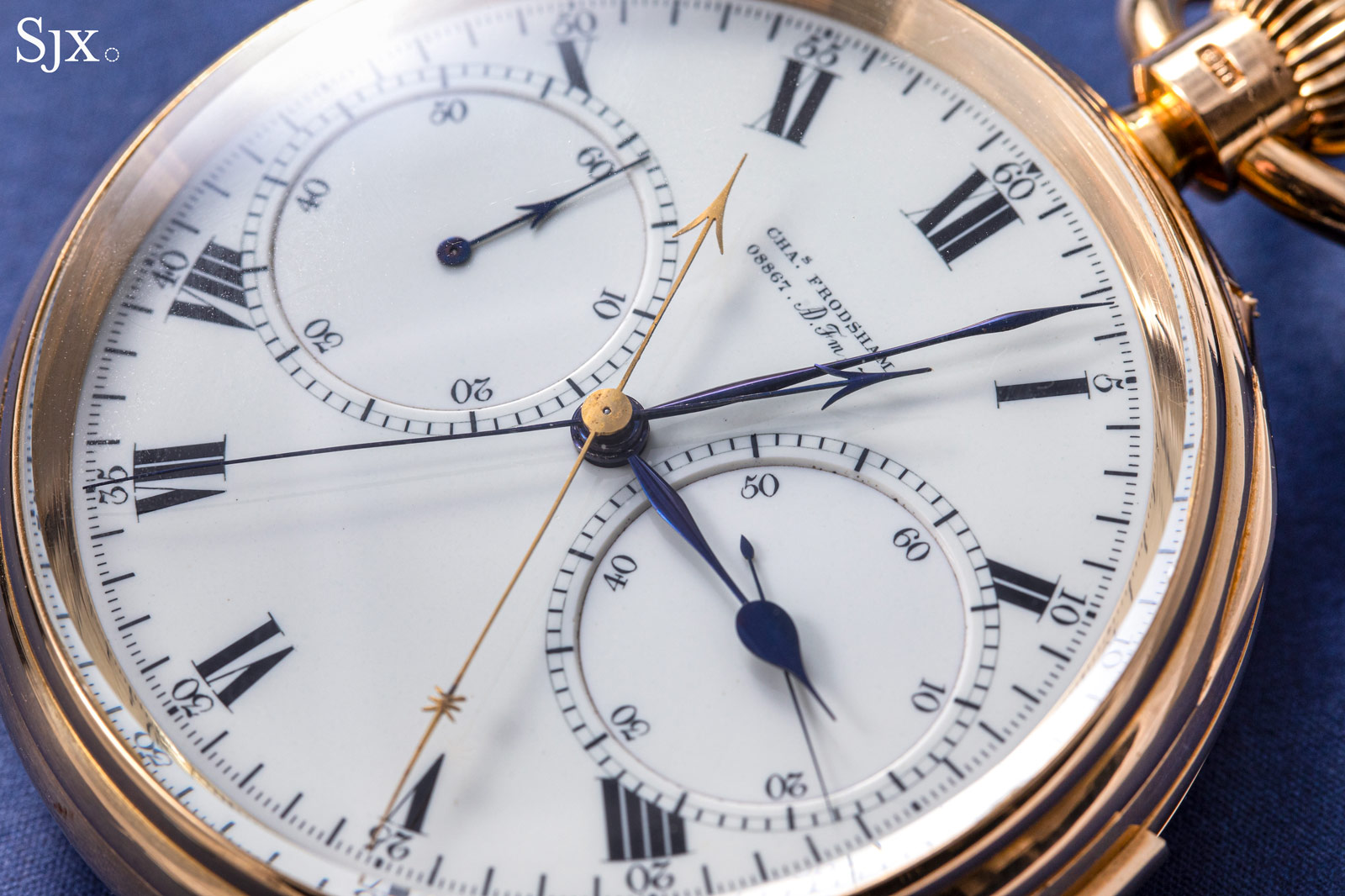
The movement is typical of high-end English watches of the period, like the even more complex S. Smith grand complication, which is to say it is a Swiss movement blank that was completed and decorated in England by Frodsham and its movement supplier Nicole Nielsen, which was founded by a pair of Swiss watchmakers who moved to London. The tourbillon carriage, for instance, is a Nielsen-type cage.
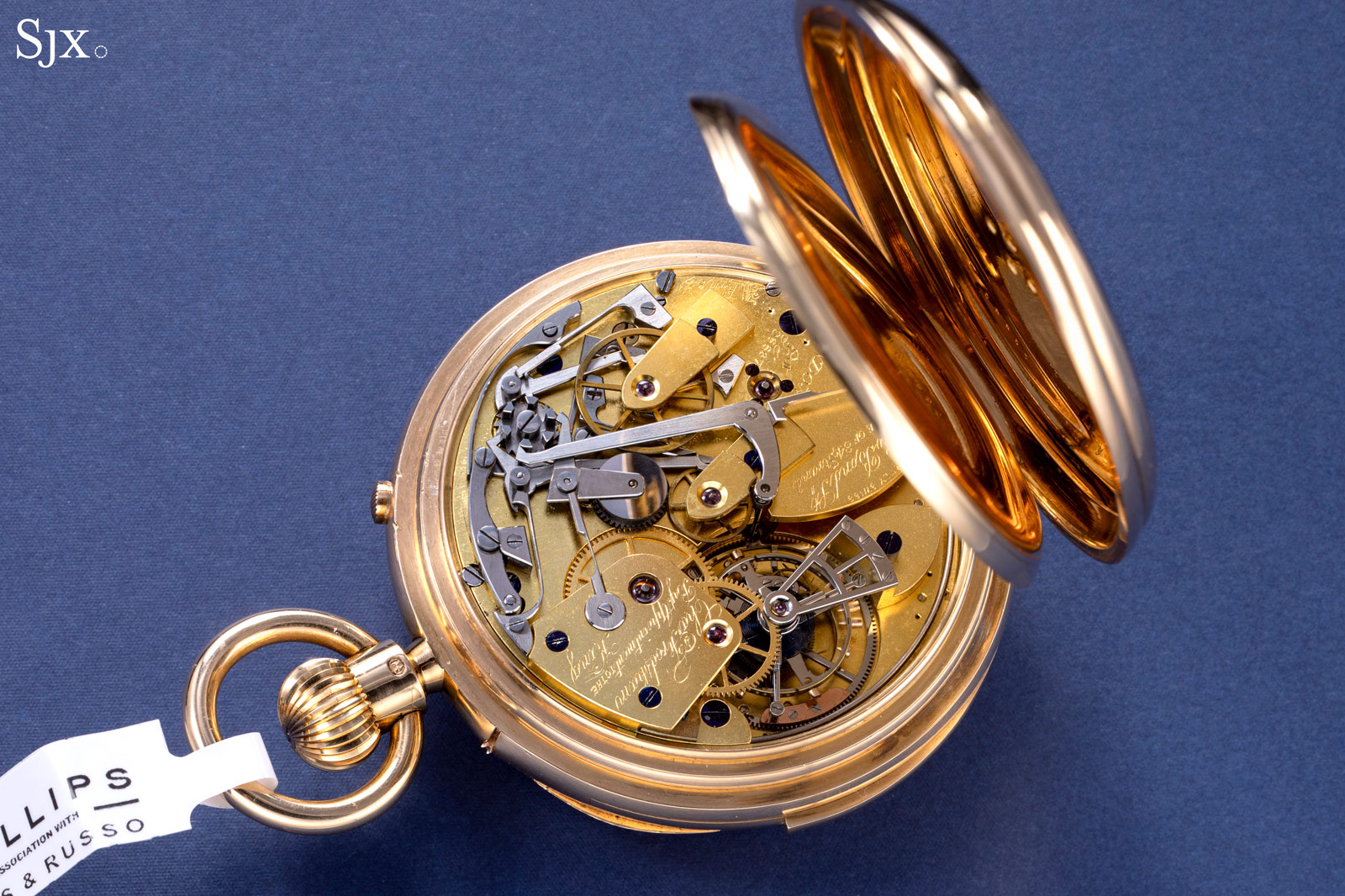
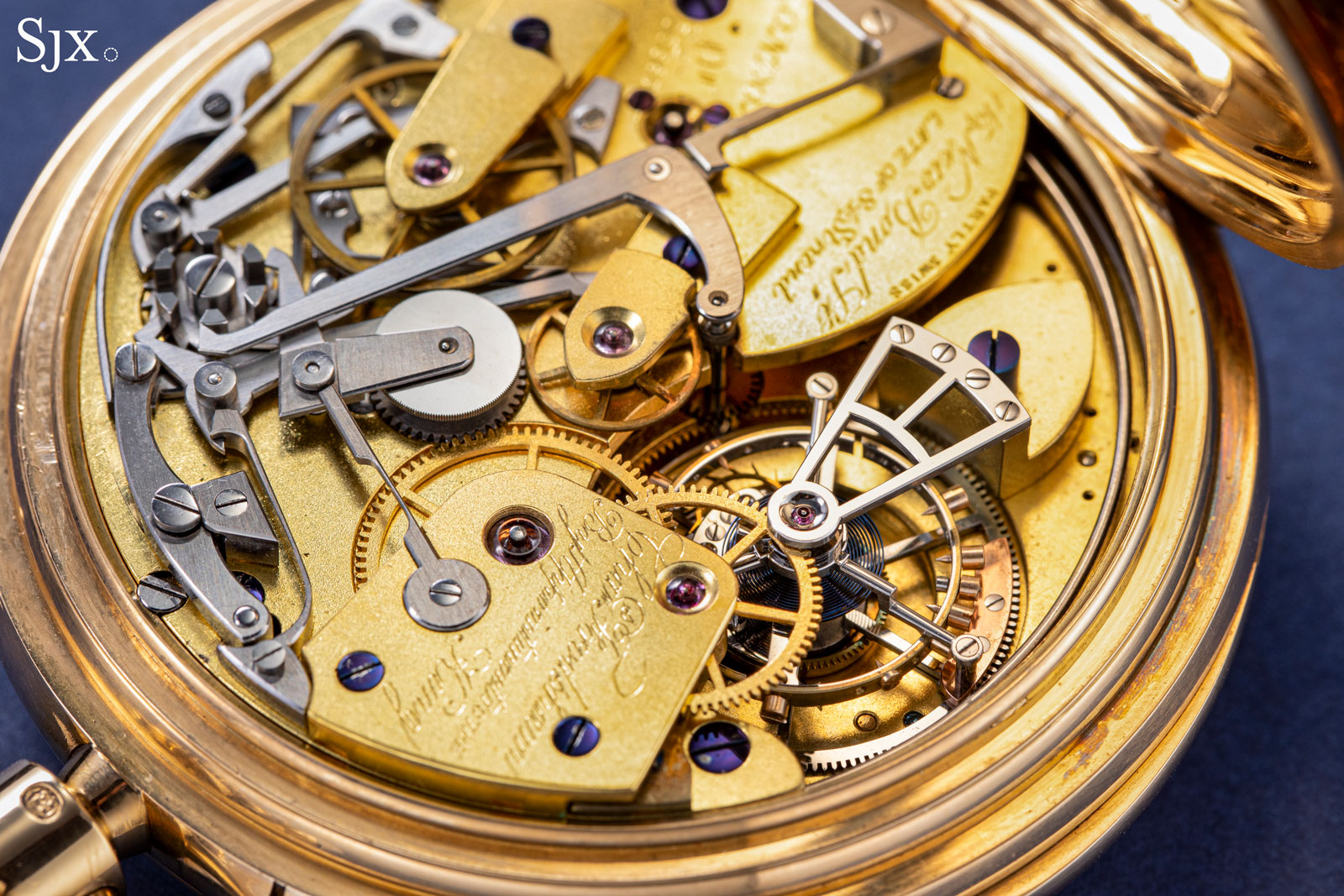
The movement has a recognisably English style with a three-quarter plate, gilt frosting on the bridges, and an overall sturdy appearance. It’s the same style that was later adopted by George Daniels.
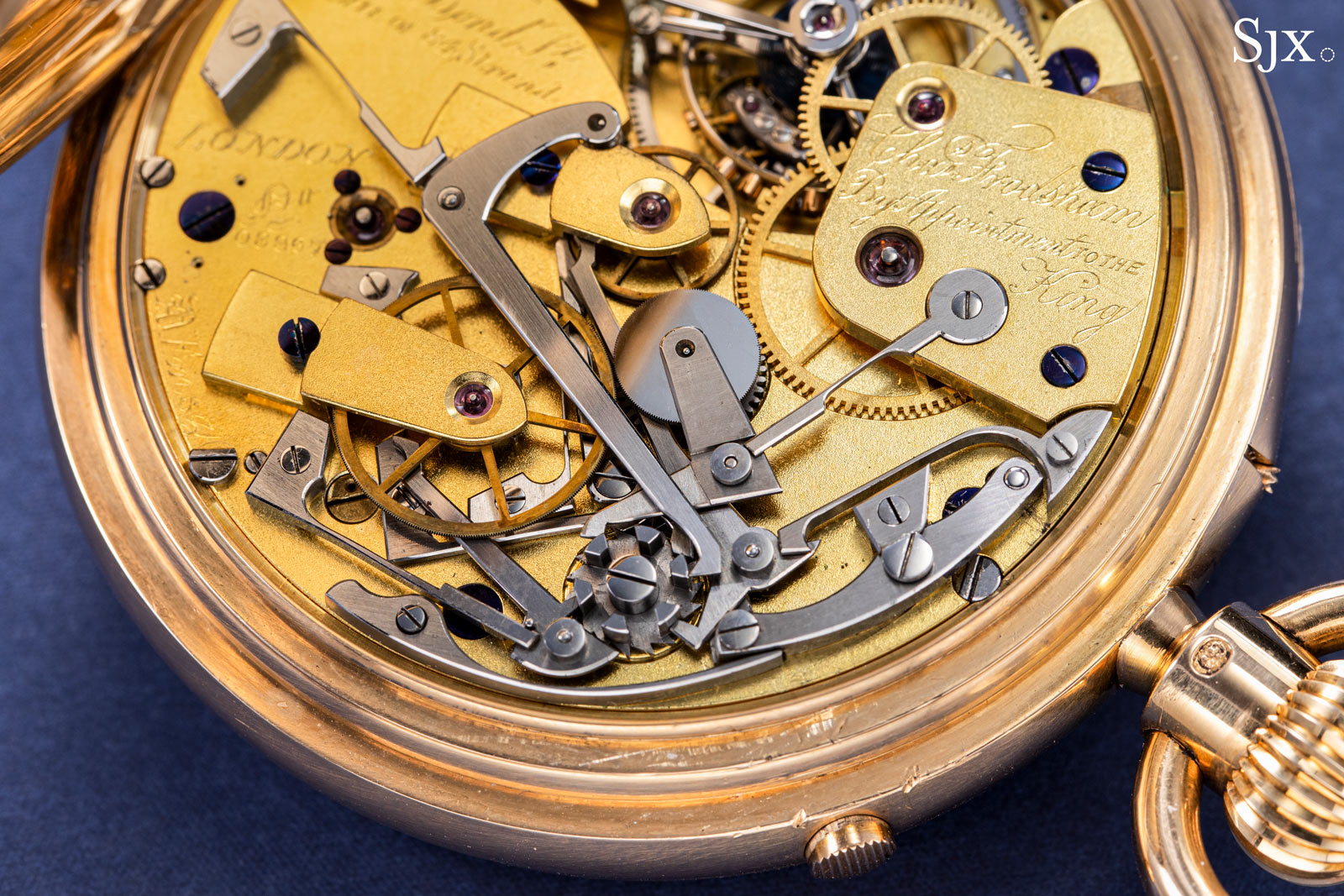
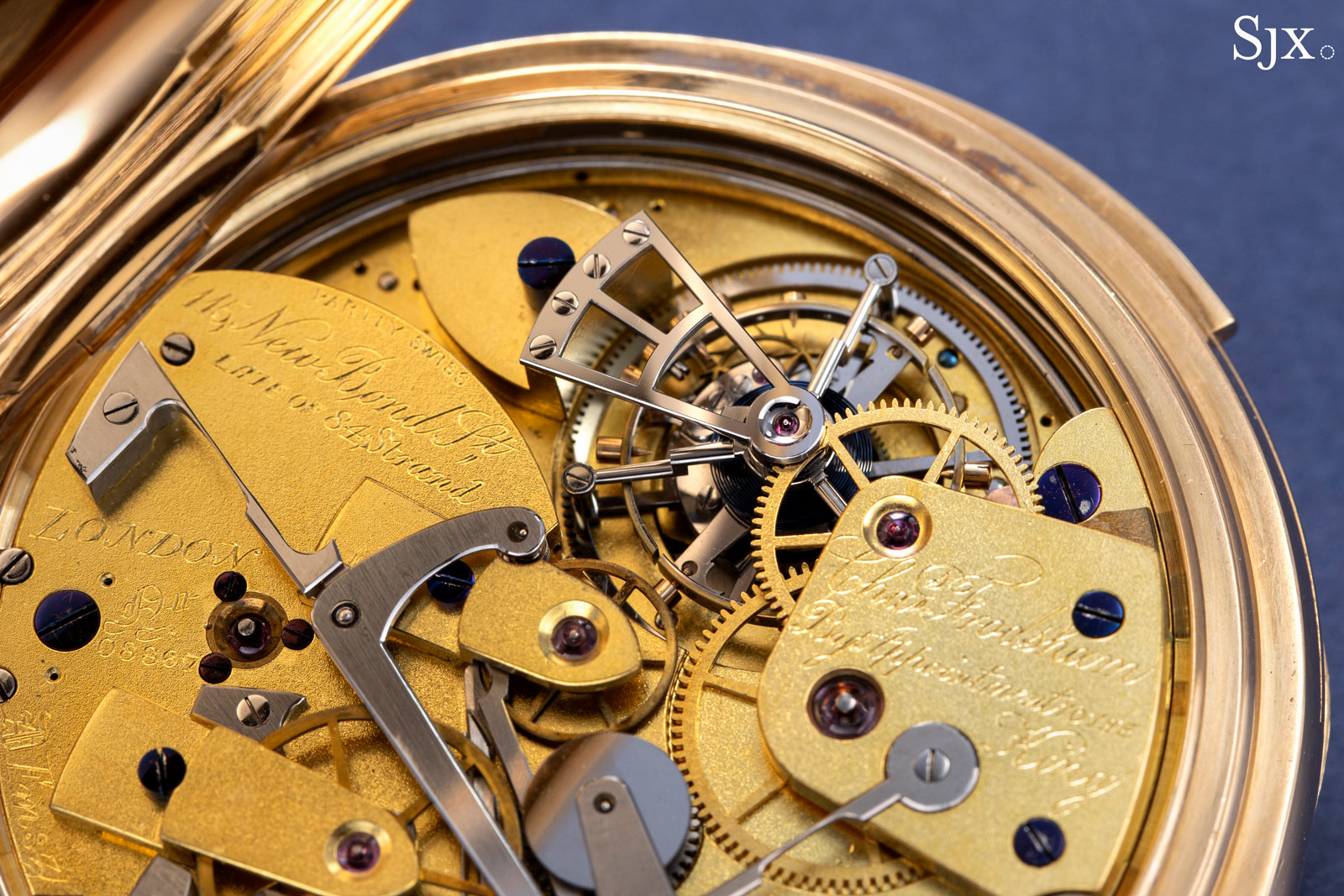
This has an estimate of HK$480,000-960,000, or US$61,500-123,000, which is more affordable than similar watches from Swiss brands of comparable stature.
1013 – Paul Ditisheim Detent Chronometer with Three Gold Bridges Tourbillon
A large, heavy double-hunter case that’s 59 mm in diameter and relief engraved in Art Nouveau style contains a most interesting movement: a rare tourbillon made by Paul Ditisheim but done in the style of Girard-Perregaux’s famous Three Gold Bridges.
Ditisheim was born into the family of watchmakers that founded Vulcain, but is mostly remembered now for having founded Solvil et Titus (then as two separate brands), today a maker of inexpensive watches.
However Ditisheim established his namesake brand in 1892 to specialise in chronometer pocket watches of the highest quality and precision. His interest in timekeeping led to several advancements in balance wheels and hairsprings. He also worked with Charles Édouard Guillaume, after whom the temperature-compensating bimetallic balance is named.
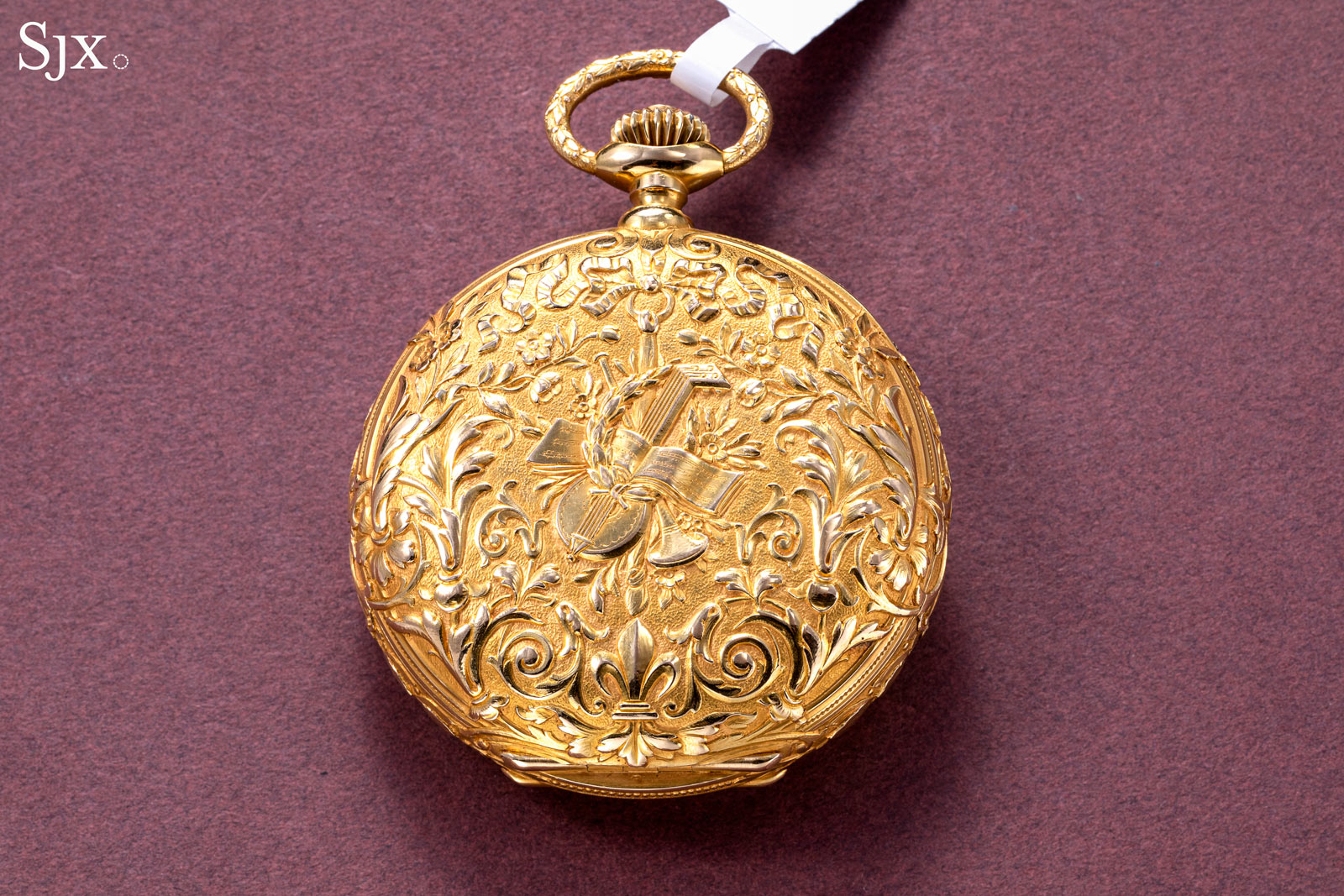
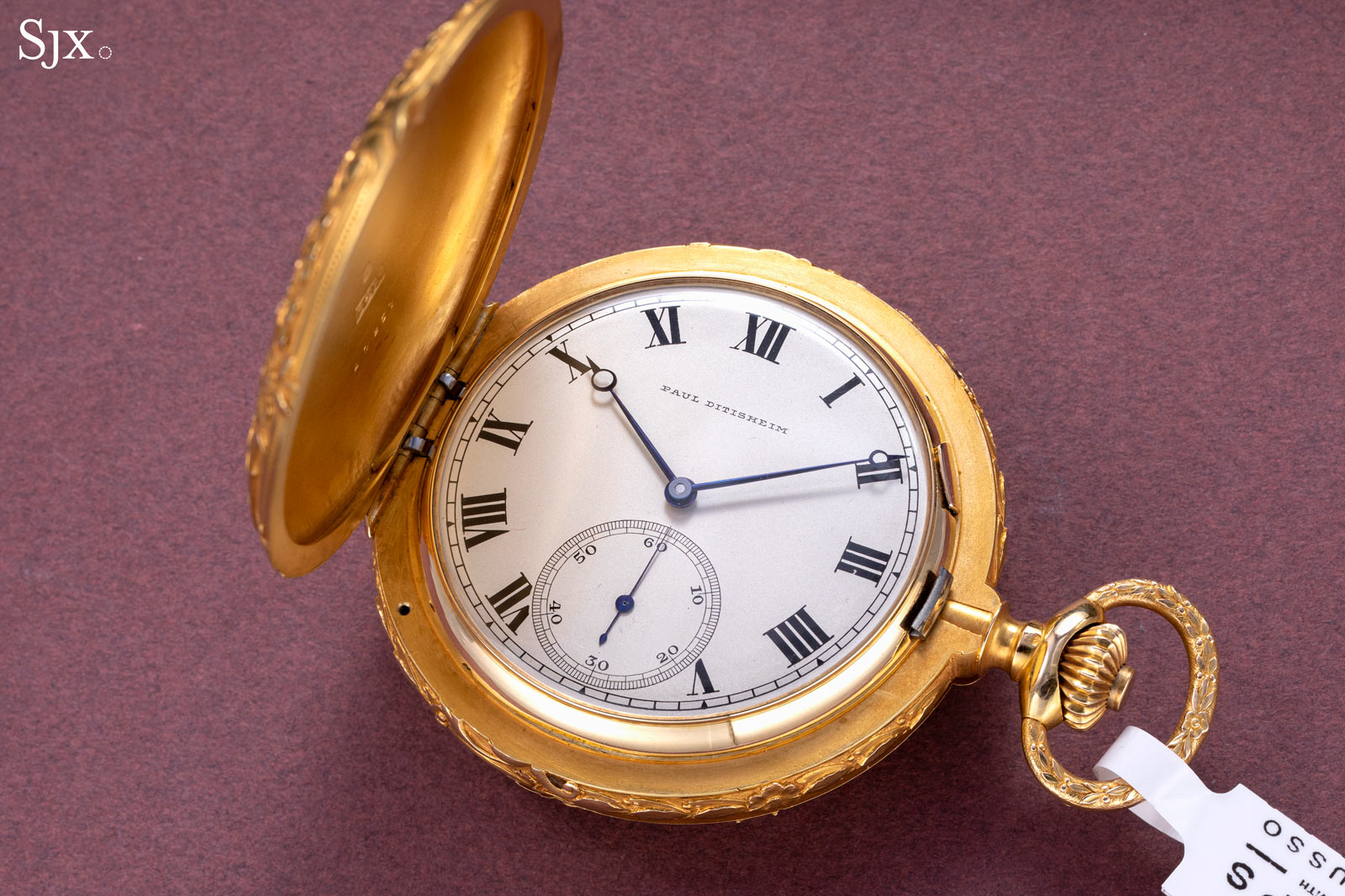
This watch is one of the rare tourbillons made by Ditisheim – he is believed to have made less than 10 – and is especially unusual because of its Three Gold Bridges, a unique construction synonymous with Girard-Perregaux. Ditisheim was perhaps inspired by Girard-Perregaux, then famous for its unique tourbillon.
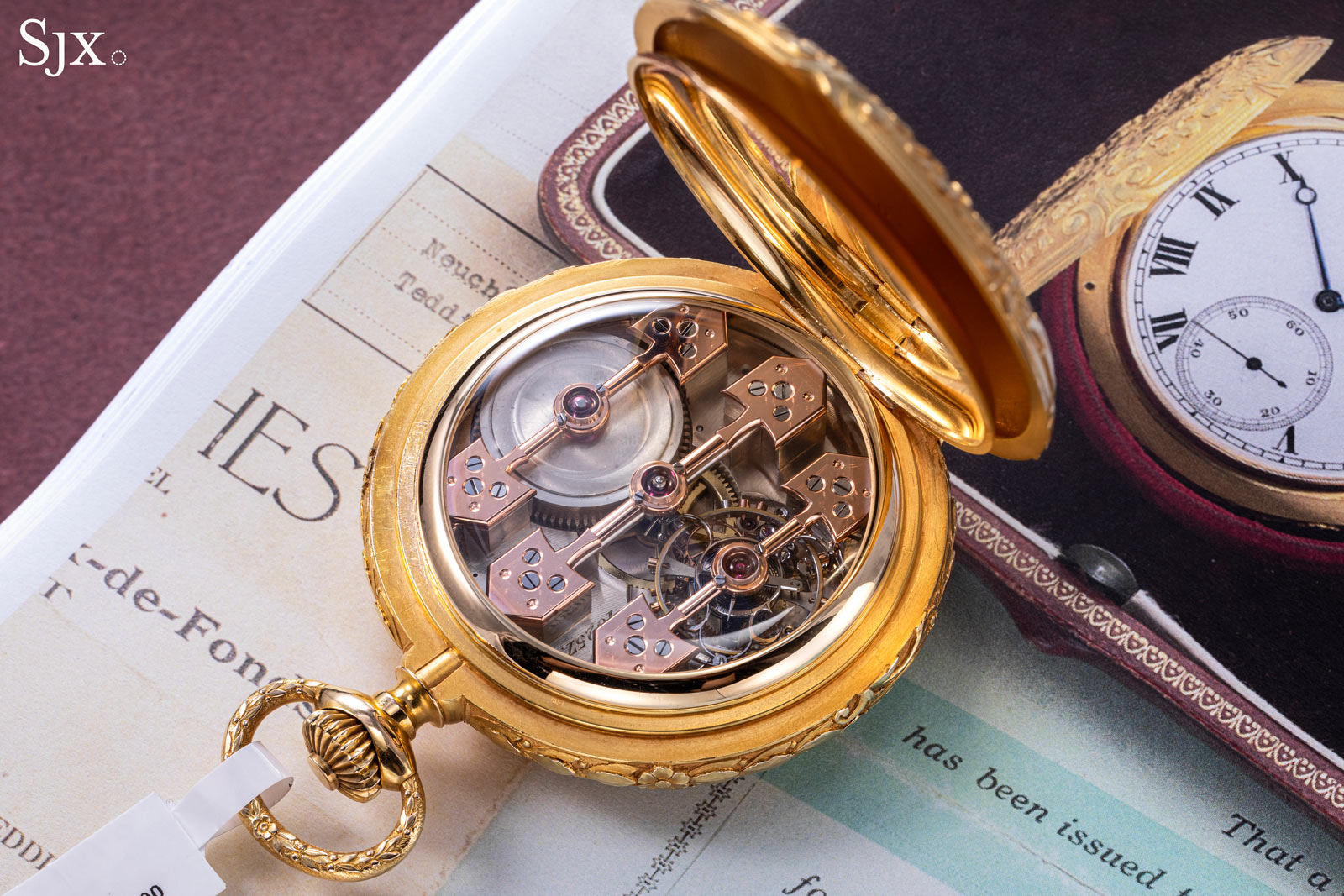
The movement has a symmetrical layout with arrow-shaped bridges in solid pink gold to secure the barrel, centre wheel, and tourbillon. But unlike Girard-Perregaux tourbillon pocket watches that utilised tourbillons made by Ernest Guinand, this has a tourbillon by Auguste Grether, another of the leading tourbillon makers of the period.
But it’s not just a tourbillon: within the carriage is a spring-detent escapement, then the default escapement for the finest chronometer pocket watches.
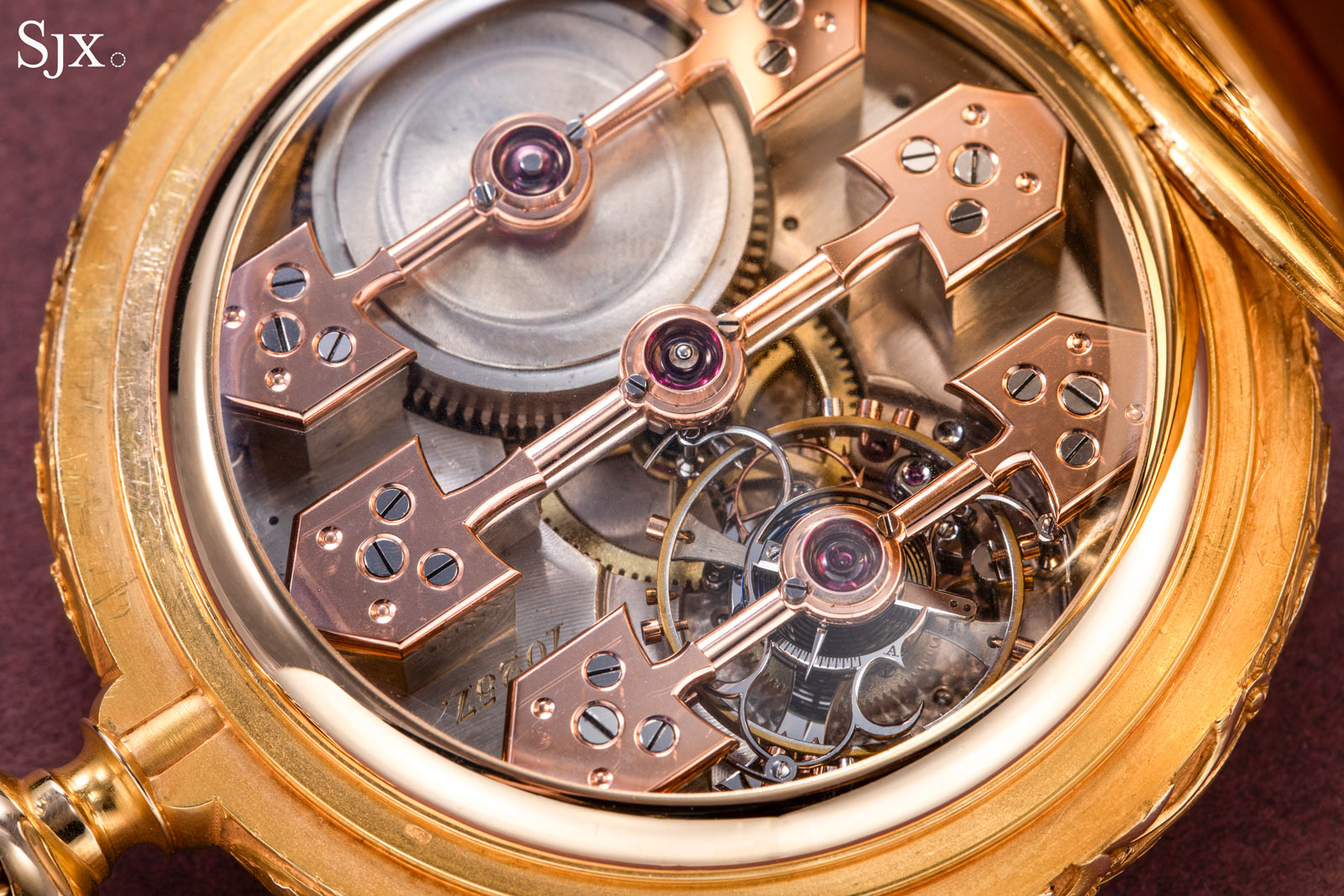
As was customary for top-class chronometer watches of the time, this was tested at an astronomical observatory, twice in fact. The watch is accompanied by a first-class certificate from the Neuchâtel Observatory dated 1916, as well as a 1917 Class A “Especially Good” certificate from the Kew observatory.
This Paul Ditisheim tourbillon is accompanied by its original box, chronometer certificates from the Kew and Neuchâtel observatories, as well as the maker’s certificate listing the distinctions awarded to the watch, which included prizes at the 1900 Paris Universal Exposition and 1914 Swiss National Exhibition in Berne. The watch carries an estimate of HK$480,000-960,000, or US$61,500-123,000.
Preview and auction
The sale and preview exhibition will take place at Phillips Hong Kong in the West Kowloon Cultural District.
G/F WKCDA Tower
Cultural District
8 Austin Road West
Kowloon, Hong Kong
Preview
Open daily May 17-25 from 11:00 am-7:00 pm
Auction
May 24, 2:00 pm (lots 801-934)
May 25, 2:00 pm (lots 935-1083)
(All times are local to Hong Kong, GMT+8.)
The catalogue and online bidding are available on Phillips.com.
This was brought to you in collaboration with Phillips.

